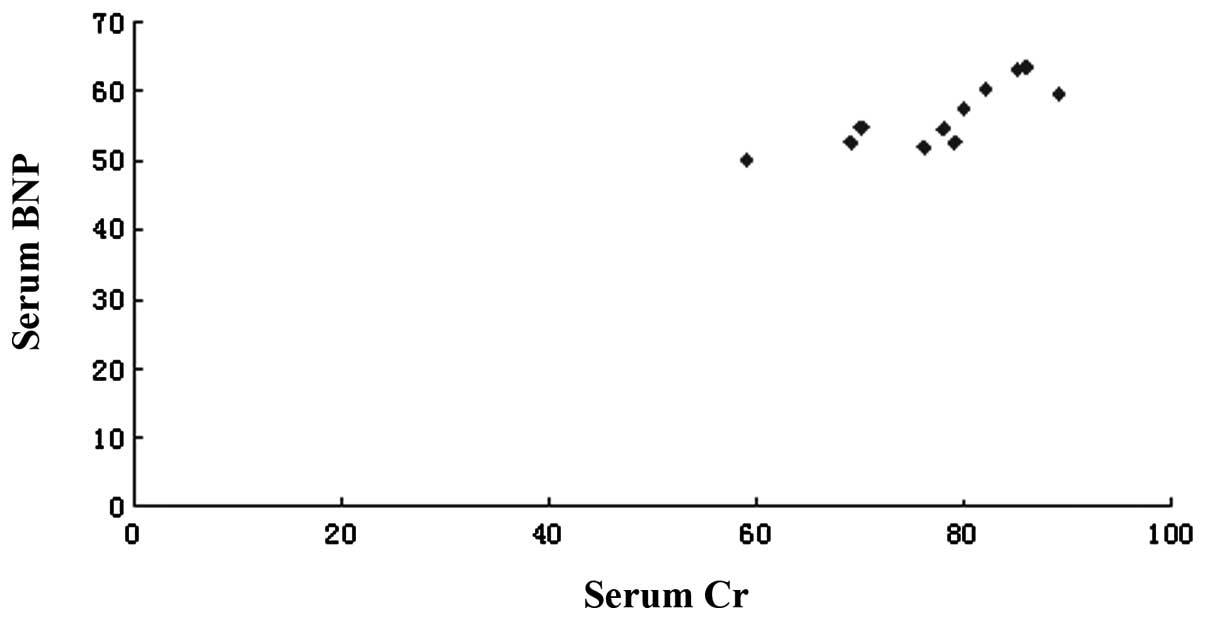Pathophysiological model of chronic heart failure complicated with renal failure caused by three-quarter nephrectomy and subcutaneous injection of isoprenaline
- Authors:
- Published online on: December 19, 2012 https://doi.org/10.3892/etm.2012.865
- Pages: 835-839
Metrics: Total
Views: 0 (Spandidos Publications: | PMC Statistics: )
Total PDF Downloads: 0 (Spandidos Publications: | PMC Statistics: )
Abstract
This study aimed to investigate the pathophysiological changes in a rat chronic heart failure complicated with renal failure model, caused by three-quarters nephrectomy and subcutaneous injection of isoproterenol (ISO). Sprague-Dawley (SD) rats in the model group received three-quarters nephrectomy after twice undergoing surgical resections and subcutaneous injection of ISO (100 mg/kg body weight, injected twice, with a 24 h interval) after one week, while rats in the control group received sham surgery and injection of normal saline. Survival rate, heart failure and renal failure were compared between the two groups after 4 weeks. Serum creatinine (Cr), blood urea nitrogen (BUN), B-type natriuretic protein (BNP), aldolase (ALD), angiotensin II (Ang II) and C-reactive protein (CRP) were determined by kit assay. Urine protein at 24 h was determined by the Bradford method and left ventricular systolic pressure (LVSP), left ventricular diastolic pressure (LVDP) and left ventricular end-diastolic pressure (LVEDP), as well as the maximum rates of increased and decreased left ventricular pressure (±dP/dtmax) were determined by left ventricular intubation. Heart weight indices were determined and the myocardial pathological conditions were observed by hematoxylin and eosin (HE) staining. There was no death in the control group, while the survival rate of the model group was 73%. Compared with the control group, each index of serum and urine protein in the model group was significantly increased. Additionally, LVSP was decreased, LVDP and LVEDP were increased and heart weight index was increased, with a significant difference. The serum Cr was positively correlated to BNP levels in the model group. Three-quarters nephrectomy and subcutaneous injection of ISO induces left ventricular heart failure and renal failure at the same time, which is characterized in pathophysiology by left ventricular diastolic and systolic function failure, left ventricular myocardial hypertrophy and reconstruction complicated with renal insufficiency.












